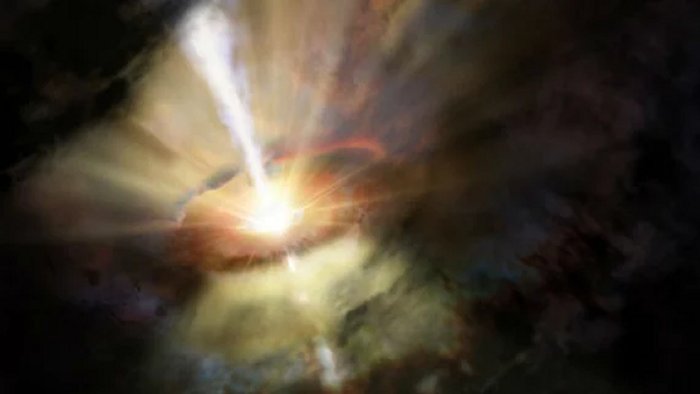Gigantic Fountain Of Cold Molecular Gas Pumped By A Black Hole – Observed By ALMA
MessageToEagle.com – Using the Atacama Large Millimetre/submillimetre Array (ALMA) of telescopes, the team, which includes researchers from Cardiff University, has observed a supermassive black hole acting like a ‘monumental fountain’ in the middle of a galaxy over a billion light-years from Earth.
“Galaxy evolution can be pretty chaotic, and big galaxies like this tend to live hard and die young. For the first time we have been able to observe the full cycle of a supermassive black hole fountain, that acts to regulate this process, prolonging the life of galaxies,”Dr Timothy Davis, from the School of Physics and Astronomy at Cardiff University, said in a press release.

At the center of the galaxy, named Abell 2597, the black hole is drawing in vast stores of cold molecular gas and then spraying them back out again in an ongoing cycle.
The giant elliptical galaxy Abell 2597 lies at the heart of one of the universe’s most massive structures and has a sprawling cluster of other galaxies surrounding it.
According to the researchers, this entire system operates via a self-regulating feedback loop. The incoming material provides power for the fountain as it “drains” toward the central black hole, like water entering the pump of a fountain. This gas then causes the black hole to ignite with activity, launching high-velocity jets of super-heated material that shoot out of the galaxy.
As it travels, this material pushes out clumps and streamers of gas into the galaxy’s expansive halo, where it eventually rains back in on the black hole, triggering the entire process anew.
By studying the location and motion of molecules of carbon monoxide (CO) with ALMA, which shine brightly in millimetre-wavelength light, the researchers were able to measure the motion of the gas as it falls in toward the black hole.
It is from these plumes of gas that new stars are formed in galaxies, and the researchers believe that the process they have observed could be common across the Universe and, more importantly, could be crucial to the development of massive galaxies like this one.
MessageToEagle.com










